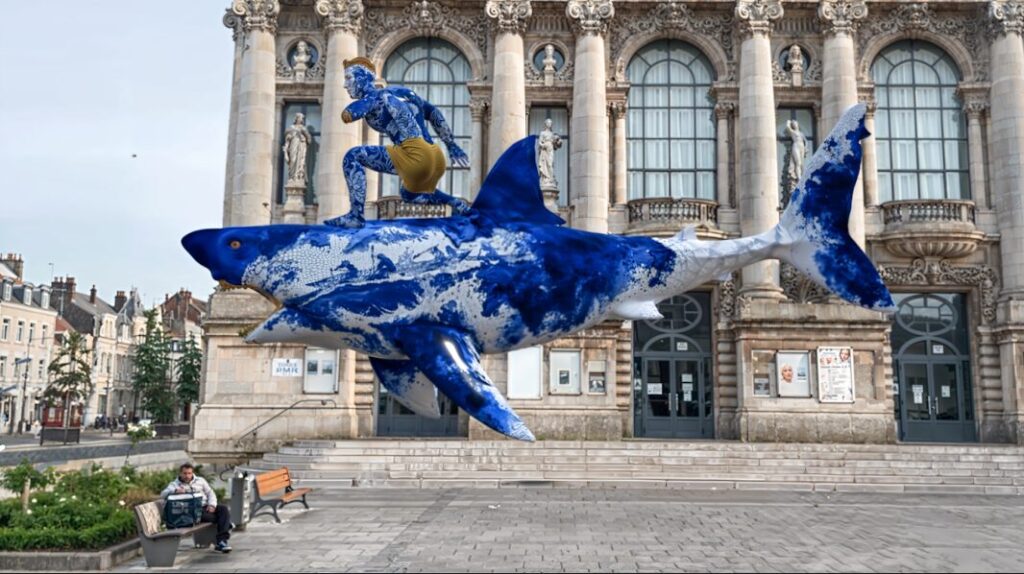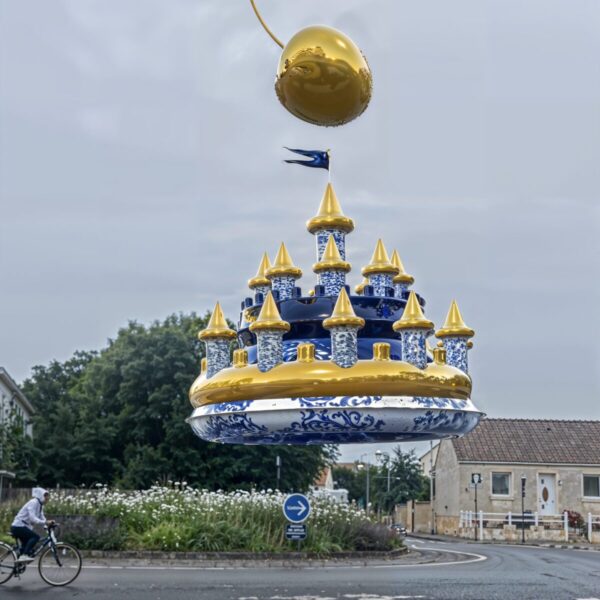The city of Calais, in the north of France, is the first to adopt 3D as part of an outdoor exhibition. Its urban art festival offers a route all summer that allows you to discover, from your smartphone, artistic creations in augmented reality. Just scan a marking on the ground at specific locations and the artwork materializes in front of you.
The urban arts festival of Calais is celebrating its fifth edition this year, but 2024 will mark a turning point. The Marseille artist Stephan Muntaner has developed an experience where twenty of his creations can be seen from a mobile phone.
Just scan a stencil-made ground marking - an ancient technique - to see the 3D artwork appear. With invisible street installations (and therefore non-intrusive for those who are not interested), this process offers a completely new immersive interaction for the viewer.
It allows you to take a tour of the artwork, to enlarge it to capture the details from a bench or standing in the middle of passersby. This innovation not only redefines the way of interacting with art but also allows generations that no longer live only with the digital to access it.

AI at the service of culture
Since 2022, Stephan Muntaner, with the collective BBB (Big Bold Brothers), has been exploring generative artificial intelligence algorithms. He now incorporates this technology into his process around experimental creation projects, in order to create unique universes.
Collaborating with cultural institutions and renowned festivals, his work, often influenced by pop culture and fantasy tales, addresses various themes such as love, the environment, disability, and self-confidence. Always in a poetic and playful tone.
Our media owes him its name, its logo, and all the graphic charter: all had to be understood and interpreted by the 22 countries around the Mediterranean.
Their collaboration continues as he designs, using AI, the images that illustrate the scientific dialogue of the Thursday column. "I use Midjourney, an Artificial Intelligence specialized in creating generative images from textual descriptions. The machine is fast, 30 seconds for a proposal. But I sometimes spend a whole day for it to produce what I have imagined, and this after generating sometimes more than 1400 images... It is my brain that decides when the goal is reached. When the idea I want to represent and convey is accomplished."
In September, these artworks will be presented in a gallery space in connection with 22-med and will become NFTs marking the issues of a particular era in a geographically threatened space.
An ecological and accessible initiative
The Calais XXL Experience project is part of an initiative to reduce environmental impact. By choosing augmented reality artworks accessible through a mobile application specifically dedicated to each exhibition, Muntaner and his team minimize the use of physical materials and transportation. They significantly reduce the carbon footprint in this way.
This first for an urban art festival pursues another objective: to make creation accessible to territories that are smaller than capitals or big cities. The widespread use of mobile phones in all age groups facilitates this initiative. Unlike experiences that require expensive headsets, the application developed specifically for this exhibition works on mobile phones from three generations.
"This allows reaching a wider audience and avoiding creating a social difference related to technological accessibility," enthuses Stéphan Muntaner. "This offers new perspectives for the accessibility of a large audience not initiated in contemporary art."

